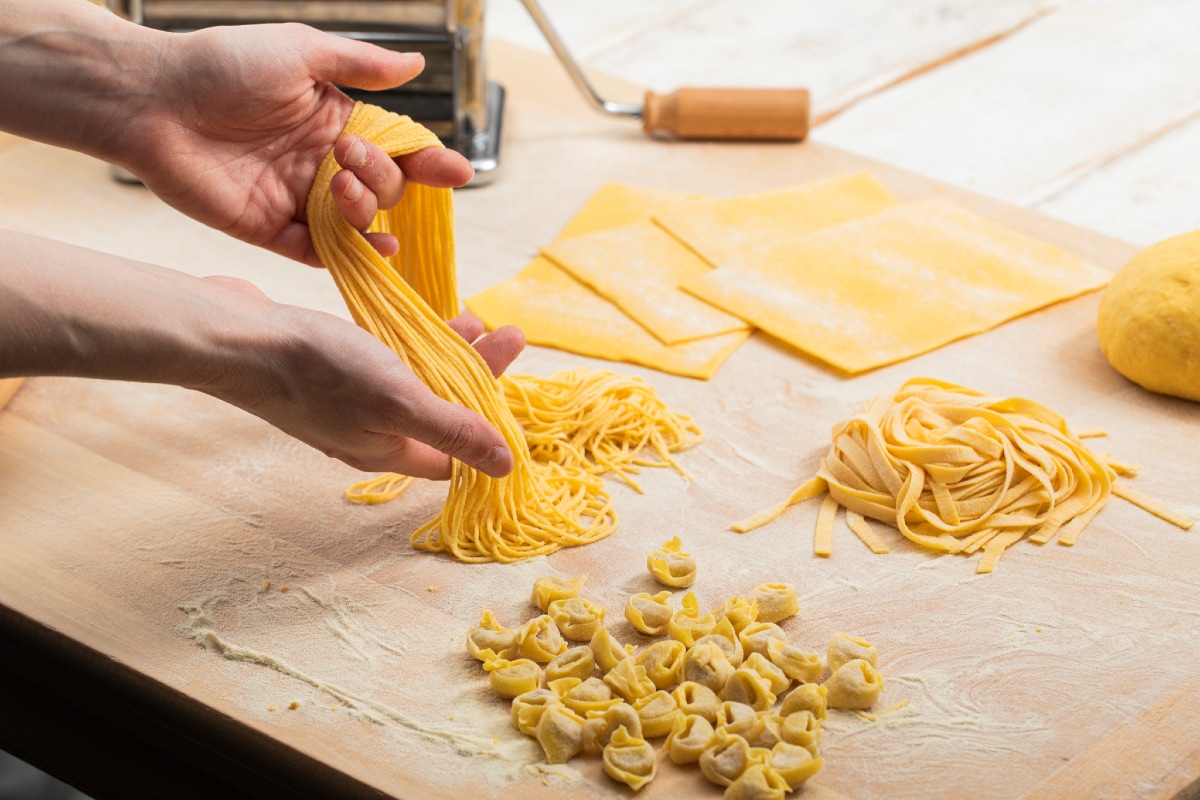Tagliatelle
- Average
- 30 min

Making fresh pasta at home is an ancient art: from the dough rolled out with a rolling pin you can make golden wide noodles like tagliolini or tagliatelle, stuffed like ravioli or tortellini and timeless lasagna. Even today we are going back to trying our hand at fresh homemade pasta, a genuine product made with our own hands that is priceless! If you do the math, then, it doesn't take long to prepare a good fresh pasta: 15-20 minutes for a nice smooth and elastic dough, 30 minutes of rest, 15 minutes to roll out and make the dough... in about an hour you're done! We started from the classic proportion of 3/4 cup or 3.5 ounces (100 g) of flour to one egg, but a lot depends on what shape you want to prepare. So, one of the most valuable general tips is to keep a little of the amount aside and add as needed. If you also feel like trying to be a “pasta maker" for a day, start preparing fresh pasta with us, perfect with every tasty combination, from classic ragu to fish sauces!

To make the fresh dough, pour a little less than 3 cups (400 g) of flour into a bowl (it is best to keep a bit aside to add if necessary) 1 or directly onto a wooden pastry board for its porosity. Make a crater in the middle and add the whole eggs stirring 2, with the fork and at the same time start to mix in the flour 3.

Once the liquid part has been absorbed, start kneading by hand 4: transfer to the pastry board or a wooden surface and knead there for about 10 minutes, with the palm and vigorously, pulling it in all directions 5 but taking care not to tear it. Once the dough is smooth 6,

wrap it in the plastic wrap 7 and let it rest at room temperature for at least 30 minutes. Then you can resume working the dough. Cut a piece with the pastry cutter 8, taking care to keep the rest in the wrap so that it doesn't dry out. Flour the piece of pasta 9

and pull it with the sheet maker 10 at maximum thickness and pass the dough between the rollers to obtain a thick first sheet 11, fold the two edges of the sheet towards the center 12.

to give it a more regular shape 13, then dust again with a little flour and pass it again between the rollers 14; once you have obtained a rectangular sheet, lay it on the slightly floured pastry board and trim the ends with a pastry cutter or a knife 15,

then divide it into two parts 16 so that it can be handled more easily, going gradually to the thinnest thickness until it reaches the penultimate thickness 17. At this point your fresh egg pasta is ready and you can make the pasta shape you prefer 18: you can find all the instructions at the bottom of the recipe.